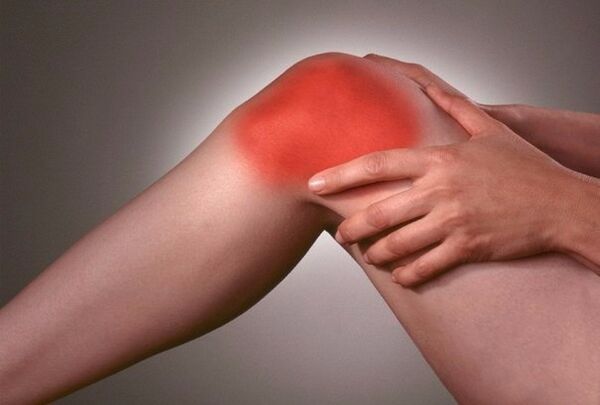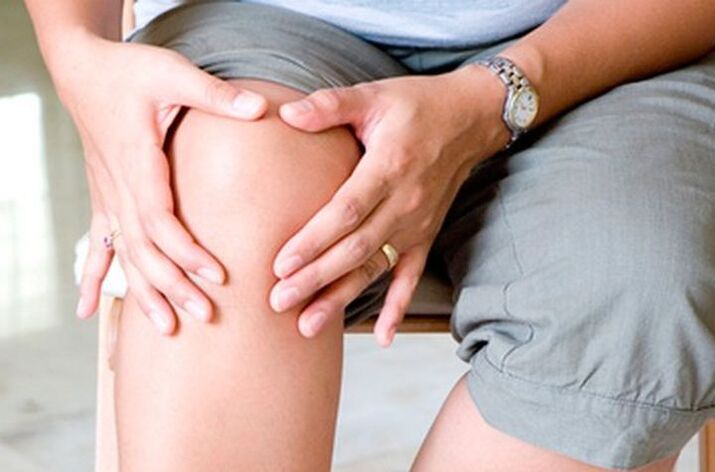
Arthrosis is a pathological process characterized by dystrophy and degeneration of articular cartilage. The problem is usually not limited to cartilage - later the pathology spreads to the (subchondral) bone tissue under the cartilage. Therefore, arthrosis is also called osteoarthritis. And because all of these disorders ultimately lead to changes in the structure of the joint, this process is called deforming osteoarthritis, which can affect any joint. In clinical practice, knee arthrosis or gonarthrosis is observed in most cases.
The essence of pathology
In terms of incidence and prevalence of knee arthrosis, it ranks second after hip arthrosis (coxarthrosis). To find out what caused this, it is worth briefly addressing the features of the anatomical structure of the knee and the functions it performs. It is one of the most massive joints in which 3 bones are involved - the femur, tibia and kneecap. Thus, it is a complex joint made up of 2 joints - the patellofemoral and the patellofemoral joints.
The joint surface of all 3 bones is covered with cartilage, which facilitates movement in the joint and protects the bone tissue under the cartilage from mechanical wear. In addition to the articular cartilage itself, the knee has meniscuses - paired cartilage formations that enhance the congruence (anatomical fit) of the articular surfaces. Articular cartilage has no blood vessels of its own. It is fed diffusely from the intraarticular (synovial fluid). Cartilage, like a sponge, contracts during movement under mechanical stress, carrying heavy loads. At this point, waste products are released from the cartilage tissue into the surrounding joint fluid. On the contrary, at the moment of relaxation, rest, the joint fluid and the nutrients in it penetrate the knee cartilage.
The nutrition of the articular cartilage of the knee joint is disrupted for a number of reasons, leading to arthrosis of the knee. However, at first there is a lack of nutrients in the cartilage tissue - chondroitin sulfate, glucosamine, calcium and other trace elements. Moisture is lost. This is the process of dystrophy followed by degeneration - a thinning of the articular cartilage. These negative processes, in turn, lead to structural and motor disorders in the knee joint.
Knee arthrosis is often confused with salt deposition. Let’s say some mineral salts, including table salt, are deposited in the form of microcrystals in the joint cavity, leading to pain and movement disorders. This is not true. Obviously, a completely different method is used to deposit the salts. In response to the destruction of the articular cartilage in the bone below the cartilage, marginal bone growths - osteophytes - are formed to stabilize the knee at least to some extent. In the future, however, osteophytes will only exacerbate arthrosis and contribute to further cartilage destruction.
Cause
The causes of arthrosis of the knee joint are many and varied, it can be the pathology of the knee itself or other diseases and metabolic disorders. In this regard, gonarthrosis can be primary and secondary. The mechanism of primary arthrosis is not fully understood. In this case, the disease is thought to be caused by a combination of factors such as:
- Advanced age, when degenerative changes occur not only in articular cartilage but also in all organs and tissues;
- Overweight, which increases the mechanical stress on the joint;
- Physical inactivity, or conversely, excessive physical activity;
- Certain congenital anatomical disorders of the knee in which the articular cartilage and the bone below the cartilage are initially altered;
- General metabolic disorders leading to changes in the mineral composition of synovial fluid.
Secondary arthrosis of the knee joints is a complication of other diseases. Most often, such diseases are arthritis of various natures - gout, rheumatic, rheumatic, septic, tuberculosis, etc. In these diseases, various pathological factors (infection, perverse immune reactions, uric acid crystals) cause inflammation of the joint membrane. arthritis. Synovitis is necessarily accompanied by a deterioration in the quality of the synovial fluid, which in turn leads to arthrosis.
Another common cause of arthrosis is knee injury. Post-traumatic arthrosis of the knee joint is the result of intra-articular fractures of the femur and tibia, hemarthrosis (joint bleeding), ligaments of the knee, and meniscus. Here, the pathology is based on a mechanical factor (damage) and subsequent damage (arthritis). In addition, osteoporosis is often accompanied by arthrosis. Bone calcium deficiency is associated with the destruction of not only the bones but also the cartilage tissues.
Symptoms

The main symptoms of arthrosis of the knee joint are:
- Pain;
- Impaired knee movement;
- Difficult walking;
- Cracks in motion;
- First - abnormal tension, then - muscle atrophy of the lower limb;
- Deformity of the knee joint.
Initially, the patellofemoral joint usually suffers, which accounts for much of the functional load. In general, arthrosis knee pads are perhaps the most vulnerable. In arthrosis, dystrophic changes start in the cartilage of the patella. Clinically, this is manifested by swelling and pain when the bone is felt. As a result of dystrophic lesions, articular cartilage undergoes sclerotic lesions - it loses its elasticity and is replaced by coarse connective tissue.
Thereafter, the joint sac and ligament apparatus undergo sclerotic changes. The joint configuration changes. Initially, it was swollen, inflamed due to concomitant arthritis. Thereafter, as degeneration and sclerosis progress, the amount of synovial fluid decreases sharply, and the joint gap narrows, which inevitably leads to movement disorders. At first, the gait was cumbersome and the muscles of the limbs were tense. Ankylosis then develops - complete immobility of the knee and, as a result, atrophy of the muscles of the thighs and lower legs. All of these changes take place over a long period of time. In this regard, arthrosis has 3 stages:
- Grade I knee joint arthrosis. The pains are localized primarily in the area of the patella and along the inner surface of the knee joint. The pains are "beginner" in nature - they appear at the beginning of the movement and then subside. In addition, the pain can occur with considerable effort (long walks, carrying weights) and disappear after rest. At this stage there are no structural changes in the joint.
- Grade 2 knee arthrosis. The pain can also occur at rest and can interfere for an extended period of time. Restrictions on movement (contractures) appear in the knee. The patient limps, must move with a stick. Inflammatory and dystrophic changes develop in the joint, which are externally manifested by an increase in the knee due to edema.
- Grade 3 knee arthrosis. Severe knee pain that does not go away after a long rest. Severe, irreversible disturbances in the structure of the joint, leading to ankylosis and loss of mobility. A change in the configuration of the entire lower limb that manifests itself in the curvature of valgus or varus (O or X-shaped).
The diagnosis of knee arthrosis is made on the basis of the above symptoms and complaints of the patient, as well as X-ray data (narrowing of the joint gap, osteophytes, osteoporosis, osteoporosis). Gonarthrosis is treated in a complex way using medications and physical procedures. grade arthrosis indicate a surgical procedure in which various types of knee surgery are performed.
















































